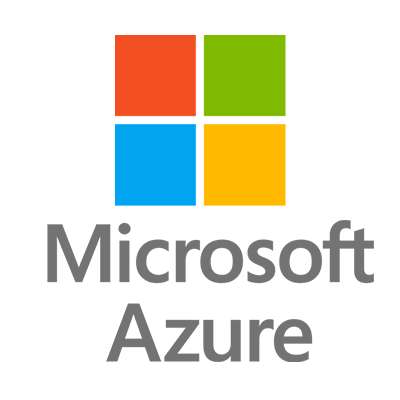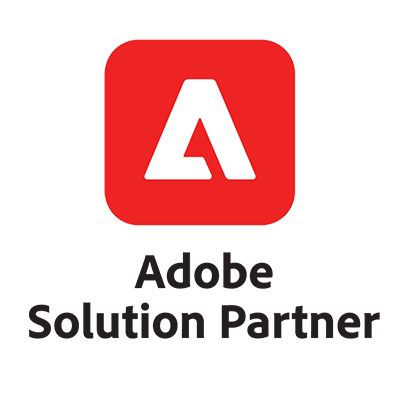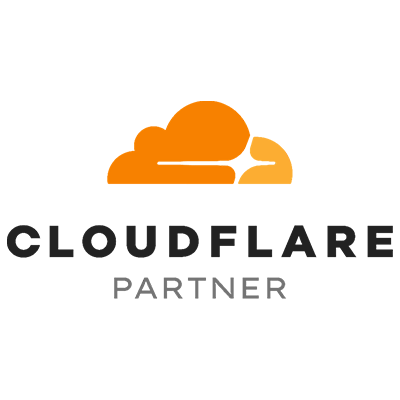Thank you!
Just a Second, One of Our Experts Will Get in Touch With You Shortly

With the emergence of remote learning, we have witnessed the emergence of a range of eLearning platforms. While some enable the pre-established education institutions to reach their student remotely, another provides online courses that can help you develop certain skills.
So, it is a great idea to build an elearning platform like Coursera where users can opt for a range of courses and gain degrees or certificates. With elearning app development company for remote learning software, not only you can enable the remote learners to adapt to the competitive environment but the different monetization strategies will even bring you a great return on your investment.
According to Verified Market Research, the eLearning market around the world had a valuation of $306.45 billion in 2023 which is all set to grow with a CAGR17.69% to achieve a valuation of $1126.37 billion by the end of 2031.
If the idea of building an eLearning platform like Coursera ever hits your mind, you must have a slight idea about the development process, required resources, and the cost of development. In this blog, we will talk all about the eLearning software development process and every other insight that you must have.
Table of Contents
Toggle
First of all, let’s talk about one of the most popular eLearning mobile apps Coursera. So, Coursera is an online learning platform that enables users to sign in for different courses, degrees, and certifications offered by a range of universities, colleges, companies, and other educational institutions. The mobile app was founded in 2012 and successfully generated a revenue of over $636 million in 2023.
There are more than 148 million learners around the world who are using Coursera offerings to gain new knowledge and skills. Coursera has partnered with many entities like Amazon Web Services, Google, IBM, and universities to provide different types of courses to users. Talking about the pricing of courses, you can find the courses even for free as well as some premium courses even out of budget for some people. There is a range of free courses provided by Coursera that the users can pursue and receive certificates. However, the price of paid courses on the platform starts at $49.
Different monetization models enable Coursera to earn money. First of all, there is a Coursera Plus version of the app where the users have free access to several courses. Moving ahead, the platform also has a commission-based model where the platform charges a certain fee from the course providers to include their material on the app. There is also a partnership between Coursera and educational institutes to provide online courses to learners. Similarly, there are a range of other monetization models that Coursera relies on for generating revenue.
[Learn more: How to Create an elearning App Like Udemy]
It is a complex process to build an eLearning platform like Coursera as it requires adequate planning to ensure the efficiency of the platform and the quality of the product. There are different phases of the process of creating an app like Coursera. Let’s have a glance over the process for a better understanding-
Before you move to the bigger decisions, make sure that you understand your niche and target audience. For example, there are different types of eLearning apps that you can choose from. Similarly, the target audience for each type of app also changes. So, you need to conduct in-depth market research to identify the competitors, their operational processes, and features. At the same time, the marketing strategy is also crafted according to the particular target audience of the application. In this phase, you will also be deciding on required resources, a timeline of the project, choosing the eLearning app development company, figuring out the cost, and much more.
Once you are sure about the type of eLearning app that you want to develop, the very next part is choosing the features that you want to see in the application. There is no doubt that the features and functionalities of the application are USP for any software that brings competitive advantages. At the same time, the cost, timeline, and resources required are also determined based on the features.
The technology stack is the constructive unit of a strong app architecture where the combination of different frameworks and programming languages makes the software operational. You must choose the right set of technology to ensure that there are expected functionalities in the application without putting unnecessary burden on the pocket. The technology stack includes programming languages, frameworks, databases, and more.
The prototype is the first deliverable from your development partner that gives an idea about the application’s design, features, and navigation. The core purpose of this prototype is for you to assess the features & navigation, and provide feedback to the development team so that the changes can be implemented in earlier stages.
This is the development phase, during which most technicalities are ensured. All the programming languages, databases, and frameworks are used in this phase to build the application’s front and back end.
You need to craft a content strategy that will help you produce and provide the original content on your platform. It is important in the case of an eLearning platform that you are providing consistent, original, and insightful content to your target audience. For the same, you have to partner with the subject matter experts and the universities to provide you with the content that you can offer on your platform.
You have to integrate a powerful learning management system that can impart different features like course material management, monitoring student progress, providing quizzes, assignments, and much more.
Once your app is complete with all the expected features, it is time to check for bugs and ensure that the product meets the quality standards. For the same, the team of quality analysts conducts a range of tests like unit testing, feature testing, automated testing, manual testing, speed testing, and much more.
This is officially the final stage of the development process where your eLearning app is deployed to the respected platform. It is the responsibility of the development partner to deploy the application on the Google Play Store or Apple App Store while complying with all the legal regulations.
Any type of mobile app requires continuous maintenance and support for efficient performance in the long term. So, you will have to opt for maintenance and support from your development partner. The core purpose of this phase is to remove the bugs as recognized by the audience. Also, the necessary updates, adding or eliminating the features, and many more tasks are carried out at this phase.
[Also read: How to Build an App Like Talabat]
As we interpreted in the earlier section features are something that make your app unique, so it becomes crucial for you to have an idea about the different features that must be imparted into the application. Here are some of the features that you might want to integrate when you make a platform like Coursera–
| Registration | Whether it is the course provider or the learners, the registration process makes sure that the user registers on the platform by providing the right and basic details. The registration also contributes toward providing a personalized experience. |
|---|---|
| Search and Filters | To help the user search for relevant courses among the thousands of offerings, you must add the search and filter option in your app. It helps the learners to sort out the most related course by inputting the title. |
| Push Notification | The notification feature will help you maintain a strong relationship with your users by sending them real-time notifications for any kind of event. Whether it is a new message, a reminder for the payment, or anything else. |
| Dashboard | The dashboard is the part of every learning platform that provides the overall summary of what a user has been doing on the app since registration. Whether it is the list of enrolled courses or the overall spending on the courses, every insight is available on the platform. |
| User Support | You need to invest in providing user support to your customers so that you can retain the users coming to your platform. For the same, you can utilize the AI-integrated chatbot or provide human assistance to users for their any query or feedback. |
| Payment Gateway | You must integrate a safe and reliable payment gateway to your platform that can be used by the learners to purchase and sign into the courses. |
| Admin Management | Admin must have all the control over the content available on the platform. From permitting to add the courses to the app, to modifying the subject to reporting certain actions, everything must be performed under Admin permission. |
As we interpreted in an earlier section, the technology stack builds the complete architecture of the application to make it functional. The frontend, and backend of the application are built using the right programming languages. Moreover, the API and third-party integrations are also part of the technology stack that brings the different functionalities into the application-
| Frontend | HTML5, JavaScript, React, Vue, CSS3, Angular |
|---|---|
| Backend | Node.js, Python, Laravel, Golang |
| Database | MySQL, Redis, PostgreSQL, Amazon RDS |
| Payment Gateway | PayPal, Stripe, Apple Pay, Authorize.net, Google Pay |
| Cloud Computing | AWS, Microsoft Azure, Google Cloud |
| Messaging | Twilio |
| Web Server | Nginx |
| Mobile Platform | Swift, Flutter, Kotlin (for Native), React Native (for Cross-Platform) |
| Video Hosting & Streaming | Amazon S3, YouTube, RTMP, WebRTC, Vimeo |
| Content Delivery Network | Cloudflare, MaxCDN, Akamai |
| Push Notification | Firebase, Onesignal |
[Also read: How to Build an App Like MyFitnessPal]
The cost of creating an app like Coursera depends on various factors. For example, if you want to build a Learning platform like Coursera with simple features and limited functionalities, you can get the application developed within a few thousand dollars. On the other hand, if you are going toward Coursera-like platform development with exceptional capabilities and functionalities, you will have to invest much more than the former.
So, instead of sticking to a random number as the cost to make a platform like Coursera, it is a better idea to have an understanding of the factors that consume the different portions of your investment. Multiple components will help you to determine the cost of creating an app like Coursera. Let’s have a glance over what it takes to build online learning platforms.
| Core Components | Estimated Cost |
|---|---|
| Core Functionalities | |
| Course creation and management | $40,000- $80,000 |
| Payment processing and revenue sharing | $20,000- $60,000 |
| Student enrollment and management | $30,000- $50,000 |
| Additional Features | |
| Video hosting and streaming | $20,000- $50,000 |
| Quiz and assessment tools | $20,000- $40,000 |
| Discussion forums | $10,000- $20,000 |
| Certificate generation | $10,000- $20,000 |
| Design and Development | |
| UI/UX Design | $20,000- $40,000 |
| Front-end Development | $30,000- $60,000 |
| Back-end Development | $50,000- $80,000 |
| Other Costs | |
| Project management | $10,000- $20,000 |
| Quality assurance and testing | $20,000- $40,000 |
| Ongoing maintenance and support | $20,000- $40,000 |
| Total Estimated Cost | $150,000- $500,000 |
Coursera is an online learning platform that enables businesses around the world to provide a variety of courses for free as well as for a fee. On this platform, the user can access the different courses, skill classes, degree programs, and diploma programs. For the same, the company partners with universities, colleges, and course providers around the world.
Coursera charges a fee for the colleges and universities to register themselves on the platform. Similarly, users who are looking for online education courses to acquire any skills or certificates also register on the application. Once the profile, the user can now easily search for the relevant programs available on the platform, offered by the different institutions.
All the learning material is already uploaded on the platform in the form of PDFs and video lectures. The user can sign up for the free courses as well as take admission in the paid courses to get the degree or certificate post-completion. Mostly, there is a commission that Coursera charges from the universities and learners. When the user pays the fee for a course, Coursera keeps a certain amount to themselves while paying the agreed course amount to the university or institution. Also, Coursera even promotes certain universities on its platform which brings them additional revenue along with the standard monetization model.
[Also read: How to Make an App Like DoorDash?]
When you plan to create an app like Coursera, different monetization models can help you make money and generate a good return on investment. Also, having a clear vision of the money-making strategy will help you significantly to make the bigger decision to build an eLearning platform like Coursera. For example, suppose you are relying on the advertising model. In that case, you need to design an app where the courses can be provided for free but the advertising revenue is enough to pay for all the course provides and still keep your profit safe.
The foremost mode of making money by building an eLearning platform is a registration fee. You can charge a particular fee from the universities, and course providers to register them on your platform. As this platform is going to help them sell more courses and make money, they will be willing to pay the registration fee.
Another common monetization strategy to build an eLearning platform like Coursera is a commission basis. You can charge commissions from the users as well as the universities to provide the paid courses. While the user pays a certain amount for the paid courses, you can charge the platform fee from the stakeholders.
By presenting the advertising of relevant businesses and entities on your platform, you can easily generate some revenue. However, your platform must have a broad active user base. By providing the courses for free, you can attract a huge user base and earn more from the advertising.
When you make a platform like Coursera, you can approach the universities, and course providers to get the sponsored listing. With this offer, their name will be visible on the top of search pages so that there are more chances of getting the users to register for the course. For the same, you can charge a reasonable price from the institute.
Another common monetization model that can be implemented when you build an eLearning platform like Coursera. As the terminology defines itself, it is a business model that allows you to take periodic fees from the users. The cost can be weekly, monthly, quarterly, or even annually. However, your platform must be providing enough value to the users for their subscription amount.
Coursera-like platform development is an excellent idea to invest in the eLearning sector. However, to make the right decision, you must know the inside out of the landscape so that you can contribute equally with your development partner and craft a product that meets your expectations. Whether it is determining the cost or defining the features that you want in your application, you must play a core role in deciding so that the resources are utilized wisely.
If you are also planning to build an eLearning platform like Coursera, The NineHertz invites you for a free consultation session where you can talk about all your requirements and get the right guidance for eLearning website development.
You can build a platform like Udemy or Coursera by having a clear vision about the type of software that you want to develop for a certain target audience. You need to hire mobile app developers who can ensure all the technicalities for developing an eLearning website or platform like Coursera.
The cost to build a Coursera-like app ranges anywhere between $100,000- $500,000. The exact cost can be determined only after assessing the range of factors like the complexity of the app, the location of the developer, the number and types of features, and much more.
It can take anywhere between 3-6 months in developing Coursera-like elearning websites. The exact timeline depends on several factors like the type of technology used, third-party integrations, number of members in the development team, etc.
There are different types of eLearning platforms like video-based learning, massive open online courses (MOOCs), learning management systems, one-on-one online learning, virtual learning environments, online employee training platforms, eLearning platforms for teachers, and much more.
My name is Hemendra Singh. I am a Director and Co-founder of The NineHertz, IT Consulting Company. I am having a keen interest in the latest trends and technologies that are emerging in different domains. Being an entrepreneur in the field of the IT sector, it becomes my responsibility to aid my audience with the knowledge of the latest trends in the market.
Get a precise estimation for the time and cost of your project idea. No surprises, just clarity.
Discover how AI implementation can 10X your business revenue. Learn the secrets to scalable success!
Find out why 90% of business ideas fail after launch and how you can be among the successful 10%.





Just a Second, One of Our Experts Will Get in Touch With You Shortly
Take a Step forward to Turn Your Idea into Profit Making App





